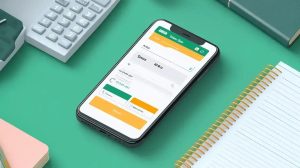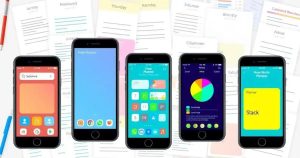Are you looking for the best expense tracker apps to manage your finances better?
With so many options available, it can be overwhelming to choose the right one.
In this guide, we’ll highlight top features, give comparisons, and provide tips on effectively using these apps for better budgeting. Get ready to take control of your spending!
Top Features of Expense Tracker Apps
The best expense tracker apps come with a variety of features to help you manage your money better. One key feature is automation. Many apps can automatically import and categorize your transactions, saving you time.
This means you don’t have to manually enter every single purchase, and you can quickly see where your money is going.
Another important feature is budget creation. Most expense tracker apps allow you to set budget limits for different categories like food, entertainment, and bills.
By keeping track of your spending against these budgets, you can avoid overspending and save more each month. It’s a simple way to stay on top of your finances.
Lastly, many expense tracker apps provide visual reports like charts and graphs. These visuals help you understand your spending habits at a glance. You can easily see what areas you are spending the most on and find places to cut back. This can be very helpful for planning your future expenses and making smarter financial decisions.
How to Choose the Best Expense Tracker
Choosing the best expense tracker starts with understanding your needs. Think about what features are most important to you. Do you want to track daily expenses, create budgets, or analyze spending patterns?
Knowing what you need will help narrow down your options. Some people prefer apps that offer more detailed reports, while others just want something simple.
Next, consider the app’s usability. You want an app that is easy to navigate and visually appealing. Check if it works on your smartphone or tablet and if it syncs with your bank accounts.
The easier it is to use, the more likely you will consistently track your expenses. Look for apps that have good reviews from other users about their user experience.
Finally, think about the cost. Some expense tracker apps are free, while others may have subscription fees. Weigh the features against the price to see if it’s worth it for you.
Sometimes a higher-priced app might offer features that help you save more money in the long run. So, evaluate the overall value before making your choice.
Comparison of the Best Expense Tracker Apps
![]()
When comparing the best expense tracker apps, it’s important to look at their unique features. Some apps focus on budgeting and offer tools to set limits for each category, while others excel at providing in-depth spending reports.
For example, apps like Mint and YNAB are popular for their budgeting features and user-friendly interfaces. However, they each have a different approach that may suit different types of users.
Another key factor in your comparison should be syncing capabilities. Some apps can connect directly to your bank accounts, automatically updating transactions, which can save you time.
Others may require you to input data manually. Apps like PocketGuard are praised for their automation, while others like GoodBudget lean on a more traditional envelope budgeting method.
Price is also a major aspect to consider. Many expense tracker apps offer free versions with basic features, while more advanced features typically come with a subscription.
For instance, apps like Personal Capital are free for most users, providing great financial insights without any costs. On the other hand, apps like YNAB charge a monthly fee but offer extensive tools designed to help users manage their money better.
User Reviews of Popular Expense Tracker Apps
User reviews are a great way to learn about popular expense tracker apps. Many users praise apps like Mint for their easy-to-use interface. They appreciate that it connects directly to bank accounts and provides automatic updates.
Users often report that Mint helps them track their spending and stay within their budgets without much effort.
On the other hand, some reviews highlight the benefits of YNAB (You Need A Budget). Users love its budgeting method, which encourages proactive financial planning.
Many find that it helps them be more mindful about their spending habits. However, some users mention a learning curve, as it requires a shift in mindset about managing money.
Another app worth noting is PocketGuard, which gets mixed reviews. Users like its simple design and the feature that shows how much money they can spend.
However, some feel it lacks deeper insights and customization compared to other apps. Overall, user reviews give great insights into what features work best and what challenges might arise when using these expense trackers.
Expense Tracker Apps for Different Platforms
When it comes to expense tracker apps, it’s important to choose one that works on your preferred platform. Many popular apps are available on both Android and iOS, making them accessible to a wide range of users.
For instance, apps like Mint and YNAB are available on both platforms, so no matter what type of smartphone you have, you can easily track your expenses.
Some users may prefer to use expense tracker apps on their computers. Apps like Personal Capital offer a full desktop experience that also syncs with mobile apps.
This allows you to manage your finances using a larger screen, which can be helpful for analyzing detailed reports and budgets. If you enjoy working on a laptop or desktop, looking for apps with strong web platforms is a good idea.
There are also apps designed for specific platforms. For example, GoodBudget is primarily a web-based app, but it has a strong mobile presence as well.
However, not all expense trackers have the same features across platforms. Always check to ensure that the app you choose has the tools you need, whether you’re on a smartphone, tablet, or computer.
Tips for Effectively Using Expense Tracker Apps
![]()
To effectively use expense tracker apps, start by regularly entering your expenses. Consistency is key. Set aside a few minutes each day or week to update your app with new transactions.
This helps you stay aware of your spending habits and keep your budget on track. If you let too much time pass, it can be hard to remember where your money went.
Another important tip is to categorize your expenses. Most expense tracker apps allow you to create different categories for your spending, like groceries, dining, and entertainment.
By organizing your transactions this way, you can see which areas you may need to cut back on. This insight can help you make better financial decisions in the future.
Lastly, take advantage of the app’s reporting and analysis features. Many apps provide insights and visual reports that show your spending patterns. Use these tools to review your budget regularly.
Understanding where your money goes can motivate you to reach your financial goals and improve your spending habits.
Common Mistakes to Avoid with Expense Trackers
One common mistake people make with expense trackers is forgetting to update their information regularly. If you don’t enter your expenses daily or weekly, it’s easy to lose track of where your money goes.
This can lead to overspending and not sticking to your budget. Make it a habit to check your app frequently and keep it up to date.
Another mistake is not categorizing expenses properly. If you mix different types of expenses in one category, it can confuse your analysis. For example, putting both groceries and dining out under ‘food’ doesn’t show how much you’re actually spending on each.
Take the time to create clear categories so you can see your spending habits more accurately.
Lastly, some users ignore the reporting features of their expense trackers. These tools can provide helpful insights, like your spending trends and areas where you can save.
If you skip reviewing these reports, you miss the chance to learn about your finances and improve your budget. Make sure to explore and use the reporting features available in your app.




